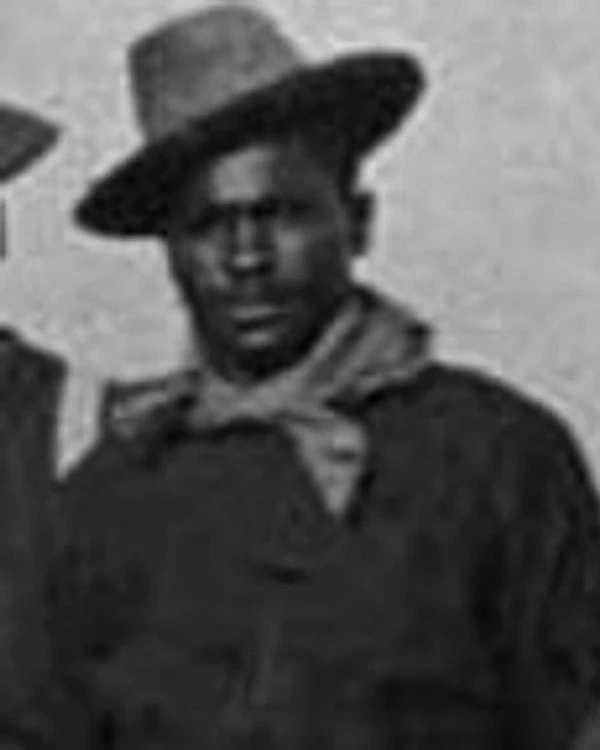Last updated: March 29, 2024
Person
Augustus Walley

U.S. Army
Augustus Walley was born enslaved on March 10, 1856, in Reisterstown, Maryland. After the Civil War, Walley stayed in the area and worked as a laborer. On November 26, 1878, he enlisted in I Troop, Ninth U.S. Cavalry, and was sent West.
On August 16, 1881, a man came into the camp of I Troop, Ninth Cavalry, commanded by Lieutenant Gustavus Valois, near the Cuchillo Negro Mountains to report that Apaches had attacked a nearby ranch. Valois assigned Lieutenant George Burnett and a detachment of 15 troopers including Walley to head to the ranch and pick up the Apaches’ trail. Valois followed later with a larger force.
Burnett’s detachment quickly picked up the Apaches’ trail, following them into the Cuchillo Negro Mountains, where they found the Apaches in strong defensive positions using the rocks and crevices as cover. Burnett deployed his men in three wings, one on the left, one on the right, and Burnett leading the center. Nevertheless, the Buffalo Soldiers were unable to dislodge the Apaches from their strong positions.
Valois finally arrived on the right of Burnett’s detachment. Burnett and his men charged and fought their way to Valois’s position, which was stronger than their original one. Once the Buffalo Soldiers unified their position, Valois ordered a retreat to gain a better defensive position against the Apaches.
Four troopers did not retreat with the others, and the Apaches moved in to cut off their retreat. Lieutenant Burnett, Sergeant Moses Williams, and Walley saw the Apaches’ response and dashed to the aid of the four troopers. Because two of the four troopers were unable to retreat under their own power, Burnett and Walley carried them to safety. Williams and the other two stranded troopers laid down covering fire for the rescue.
For his actions in this battle, Augustus Walley was awarded the Medal of Honor on October 1, 1890.
Walley continued to serve with the Buffalo Soldiers. During the Spanish American War, he was with I Troop, Tenth U.S. Cavalry. During the famous charge up San Juan Hill in Cuba, Walley along with Captain Charles G. Ayers, carried a wounded major from the First U.S. Volunteer Cavalry to safety under heavy enemy fire. For his heroic act, Walley was recommended for a second Medal of Honor. Unfortunately, the second medal was not approved. Walley also served in the Philippines. He retired from the military at Fort Washakie, Wyoming, in 1907. He had more than 30 years of service in the U.S. Army.
After retirement, Walley lived in Butte, Montana; Prague, Oklahoma; Cleveland, Ohio; and Baltimore, Maryland. In 1918 with the United States engaged in World War I, Walley volunteered for duty at Camp Beauregard, Louisiana. He was turned away because of his age. Nevertheless, he stayed at Camp Beauregard and worked for the Army as a civilian laborer.
Augustus Walley died on April 9, 1938, in Baltimore. He is buried in Saint Luke’s United Methodist Church Cemetery in his hometown of Reisterstown, Maryland. On Memorial Day in 1995, a Medal of Honor marker was placed at his grave, and a street near the church was re-named Augustus Walley Way
